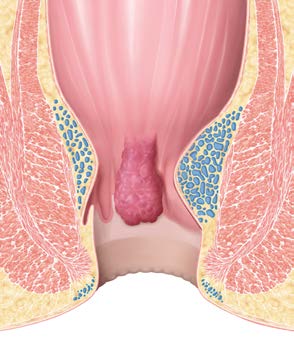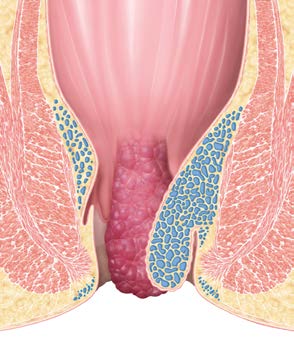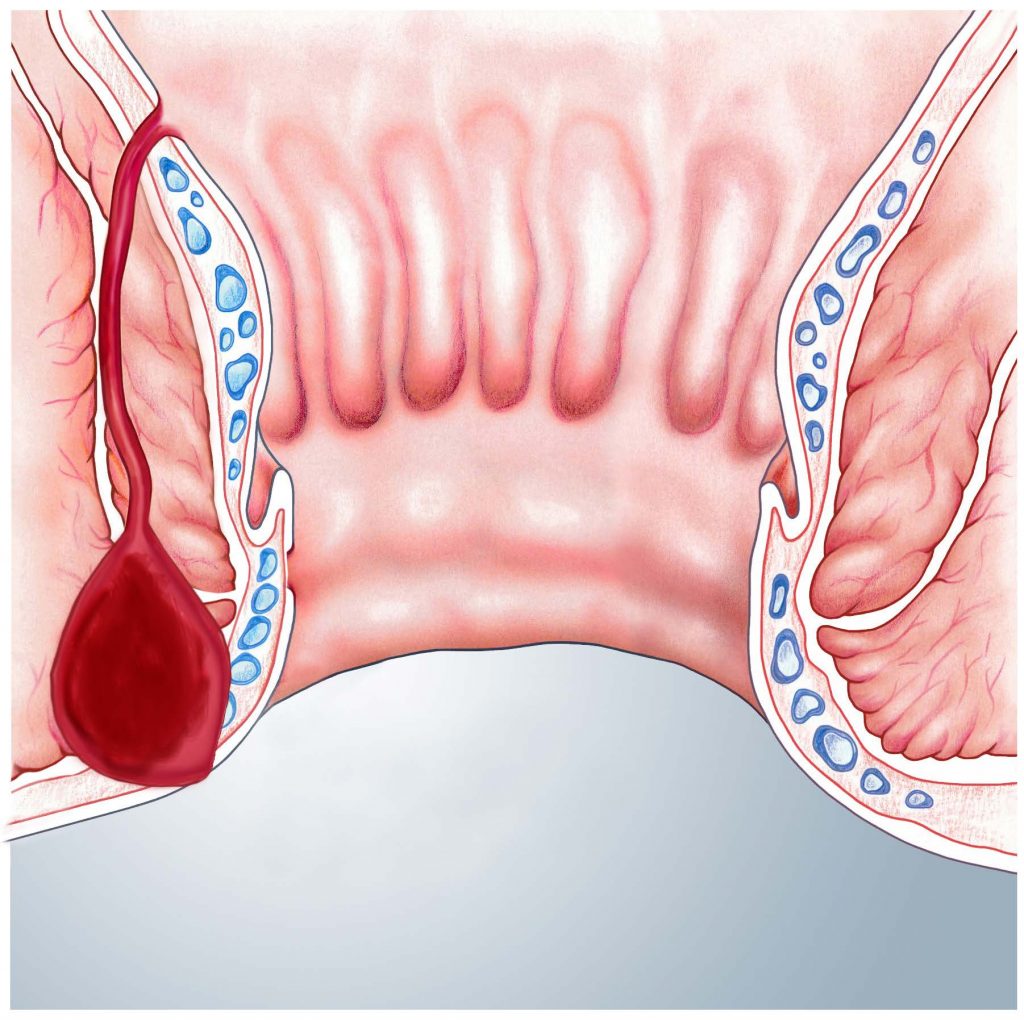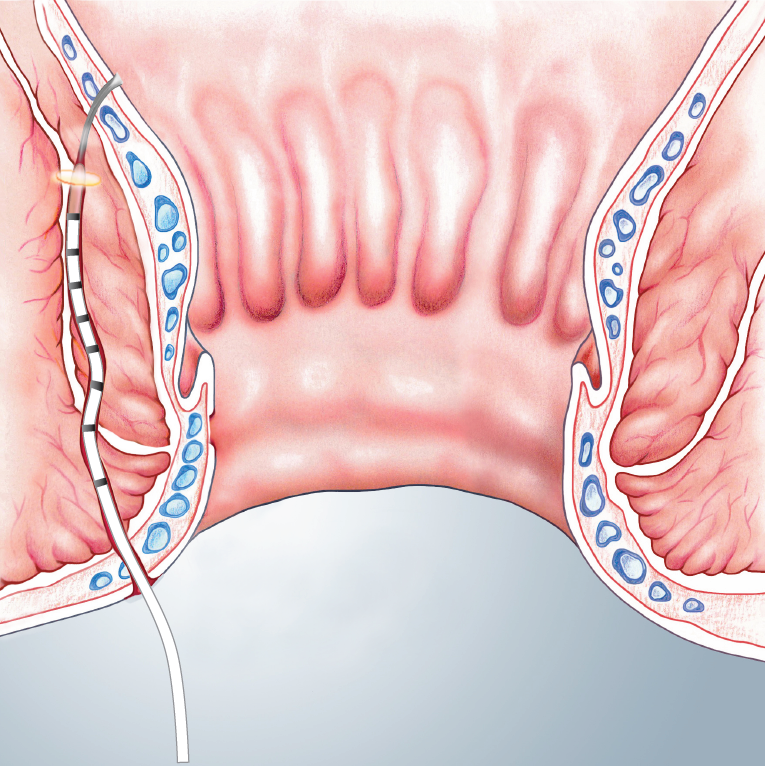What are Haemorrhoids?
Haemorrhoids, also known as piles, are swollen and inflamed veins around the anus or rectum. There are two types of haemorrhoids:
Internal haemorrhoids are categorised into Grade 1, Grade 2, Grade 3, or Grade 4 depending on their degree of prolapse.




Haemorrhoid laser ablation or laser haemorrhoidectomy is an extremely minimally invasive approach for the treatment of grade II, III and IV haemorrhoids.
The procedure is usually performed under local anaesthesia or sedation. The laser fibre is inserted into the haemorrhoid and the energy is applied, this causes the mass to shrink.
The procedure usually takes around 30 minutes.
Haemorrhoid laser ablation is considered an outpatient procedure, meaning most patients will go home the same day after a follow up with the consultant.
Due to the minimally invasive nature of the treatment is it expected that the restrictions are minimal.
The procedure has a possible recurrence rate of 10%, however post-operative pain and recovery time is far less than alternative excision treatments.
An anal fistula is a small tunnel that runs between the skin and the anal opening. They usually occur due to an infection that has caused an abscess to form. The tunnel is created when the infected content of the abscess drains to the exterior.
Laser fistulectomy is a minimally invasive treatment for anal fistulas. The procedure is usually performed under local anaesthesia or sedation. (Stage 1) The tract is opened and cleaned with 3% hydrogen peroxide solution. (Stage 2) The laser fibre is inserted from the external opening of the fistula to the internal opening. (Stage 3) The laser fibre is then slowly removed whilst applying the laser energy. This causes the tunnel to close.



The procedure usually takes around 30 minutes.
Laser fistulectomy is considered an outpatient procedure, meaning most patients will go home the same day after a follow up with the consultant. Please consult your doctor for any pain relief and how to proceed with your regular activities.
Due to the minimally invasive nature of the treatment is it expected that the restrictions are minimal.
The procedure has a success rate of 82% with traditional excision treatments being used in cases of fistula recurrence.
Chronic subcutaneous abscess in the natal cleft, which spontaneously drains through the openings. They usually occur due to folliculitis and other hairs are sucked into the skin due to gluteal motion. Symptoms include localised pain, reddening of the skin and discharge of pus or blood from an opening in the skin.
Laser pilonidal sinus treatment s a minimally invasive method for anal pilonidal cysts.
The procedure is usually performed under local anaesthesia or sedation. The tract is opened and cleaned, then the laser fibre is inserted from the farthest opening of the tract to the end of the tract. Once the laser fibre reaches the end of the sinus tract it is removed slowly whilst applying the laser energy. This laser energy causes the tract to close.
The procedure usually takes around 30 minutes.
Your consultant will provide a specific pre-procedure protocol for you to follow.
Laser sinus pilonidal excision is considered an outpatient procedure, meaning most patients will go home the same day after a follow up with the consultant.
Due to the minimally invasive nature of the treatment is it expected that the restrictions are minimal.
The procedure has a high success rate (87.5%). However, there is still a recurrence rate of 3% with complications including haematoma or abscess.
For more information about the laser devices and attachments we supply please do not hesitate to get in touch!
